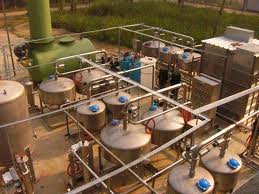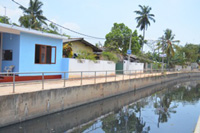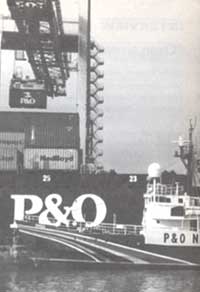
Goa regional plan has public up in arms
After a delay of over six years, Goa has a 400-page blueprint for development. But the Goa Final Regional Plan 2011 has environmental groups, urban planners and the public up in arms. They want it to

After a delay of over six years, Goa has a 400-page blueprint for development. But the Goa Final Regional Plan 2011 has environmental groups, urban planners and the public up in arms. They want it to
Madhya Pradesh is far away from achieving the United Nation's Millennium Development Goals (MDGs) by 2015, if one takes into account a mid-term evaluation report prepared by a voluntary group, Triple 7 Report. The report --- christened as 'Mid-term status of Millennium Development Goals in Madhya Pradesh - A Peoples' report' makes a telling commentary as to what extent the state lags behind on eight development goals as set by the United Nations over seven years back. The UN on September 8, 2000 made a declaration for the millennium which stated that by 2015, eight goals of development vis-a-vas removing extreme poverty and hunger, achieving universal primary education, empower of women and increasing gender equality, reducing infant mortality, improving health of mothers, fighting against diseases and protection of environment and its development would be achieved. A mid-term evaluation report on these goals in Madhya Pradesh, said that 44.77 lakh families in the state lived below poverty line, while 15.81 lakh families came in the circle of extreme poverty (quoting M P Economic Survey report 2006-07. The report quoting the National Sample Survey organization report, said that poverty in Madhya Pradesh declined from 37.43% to 21.4 per cent, which is far more than decline in poverty at national level from 26.1% to 21.8%. As per the latest report of the union government till July 2007, works towards strengthening livelihood of 1.15 lakh families in Bihar, 2.93 lakh families in Rajasthan, 95000 families in Andhra Pradesh had been undertaken but not families in Madhya Pradesh was getting this benefit. As per the National Rural Employment Guarantee Act, which provides guarantee for employment of 100 days per year to labourers, the state government as against issuing job cards to 43 lakh families, provided employment to merely 25.48 lakh families. The UN under its second millennium development goals had envisaged to increase enrollment of children in primary schools to 100 per cent by 2015. However, going by the present status of enrollment in Madhya Pradesh, it seemed unlikely that the state will achieve its goal by the given time period. A survey undertaken in 10 districts of the state under M P Shiksha Abhiyan in 2006-07, revealed that that the net enrollment ration of children in primary schools was at 84.5%. The report also said that 32% primary schools in the state had one primary teacher, while in 33.75% primary schools, there was no female teacher at all. The MDGs envisaged to reverse the trend of child mortality under five year by -3rd by 2015 but on this front also, the situation in Madhya Pradesh is far from satisfactory. The infant mortality in state stood at 76/1000 live births. Similarly, 2.4% of the children aged 12-24 years were not immunized against all prevalent diseases. The report also revealed a substantial drop on state government's expenditure on health which declined from 5.1% of the total budget in 2000-01 to 3.4% in 2004-05. The target to bring the infant mortality rate down to 53.14% hardly seems to be achievable. The report quoting National Family Health Survey III, said that the status of malnuitrion in Madhya Pradesh increased by 6.3%, going up to 60.3% the highest in the country. Similarly, the maternal mortality rate in the state stood at 379/1000, one of the highest in the country. As per the millennium development goals, the MMR and IMR in the state are essentially to be reduced to 220/1000 and 62/1000 respectively by 2011. By Krishna K Jha
The absence of a system for registration and regulation of hospitals and clinics run in the private sector has hindered the city district government's efforts to properly manage hospital waste. A source in the municipal services department of the CDGK said that about nine months ago, an exercise was launched to prepare a union council-wise inventory of hospitals, clinics, health-care centres, maternity homes and pathological laboratories and approach the medical establishments concerned to observe safe medical practices, which, however, received a less than encouraging response from hospitals. The field officers could not press the hospitals for details and the exercise remained a one-sided affair which yielded a very limited list. Under the Pakistan Environmental Protection Act, 1997, hospital waste falls within the hazardous waste category, and institutions improperly handling it can be prosecuted. Hazardous waste, existing as solid waste or a combination of solid waste, because of its quantity, concentration or physical, chemical or infectious characteristics, is considered a reservoir for disease-transmitting organisms contributing to an increase in mortality or an increase in serious illnesses. It poses a potential peril to human health or the environment when improperly treated, stored, transported, or disposed. Knowing the fact that not all the small and big clinics and hospitals, both in the government and private sectors, were in a position to segregate medical waste and dispose of it properly, in the 1990s, the then municipal organisation of the city established two incinerators for safe collection and disposal of hospital waste, including hazardous waste. However, despite all efforts, till date only about 140 hospitals, health centres, laboratories and clinics are availing the government facilities against some payments, and as such it can be said that only 10-15 per cent of the waste in question is being disposed of scientifically, the source said. It was learnt that there were about 3,500 hospitals, health centres, laboratories, clinics and doctors, including qualified dentists, operating throughout the city and also generating medical waste in solid or liquid forms. The source said that since there was no proper documentation of medical establishments available with any government agency or department, the city government's municipal services department had tasked its various field workers and inspectors with collecting the relevant data. The purpose was to get the statistics and locations of hospitals and health centres and then go for counselling and coordination on medical waste disposal. However, despite all efforts the department could prepare a list of only 300-400 establishments, which could be attributed to the fact that there was no set of laws under which the hospitals and clinics could be regulated and accredited and be made to ensure, among other things, that they were environmentally and human health friendly, said a waste manager of the city government. Experts felt that it was due to the lack of a single management scenario that health-care workers, hospital administrators, sanitary workers and other health professionals were unable to understand the necessity of protecting themselves and the public from exposure to hazardous waste. Legislation ready and waiting A source privy to the public health management section of the Sindh government said that after a long exercise and consultation with all the stakeholders, including hospital managers, a draft legislation on the regulation and registration of private sector hospitals in the province was also prepared and later approved by the then chief minister in the first half of 2007 for promulgation, but it was still awaiting the consent of the governor. "Had the ordinance been promulgated, the health department, with the cooperation of the district governments, could have addressed the issue of medical waste management and streamlined the hospital waste disposal system as well,' the source noted. When contacted, Masood Alam, the City Government's EDO for Municipal Services, said his department had started an exercise to list the hospitals, but it remained half complete for a couple of reasons. "Now that the CDGK has entrusted the job of the city's solid waste management to a Chinese company, it would be the responsibility of this firm to look into the issues of all sorts of solid waste, including hospital and hazardous waste,' Mr Alam emphasised.Replying to a question, he said that his department had no real record of hospitals in the city, but it was now understood that the Chinese, who had already started visiting the union councils of the city, would also opt for listing medical establishments to manage medical waste.
<p>Let me be straight: As the clocks ticks to Copenhagen, how low is the world prepared to prostrate to get climate-renegade US on board? Is a bad deal in Copenhagen better than no deal? <br />
<p><span style="font-family: Arial;">I thought of staying away from climate change completely. I thought any sort of engagement with climate change negotiation was nothing but lending my support to a corrupt process. But a few incidents at home just before the ‘epic’ meeting at Copenhagen forced me to say something.
<p>The recent controversy on the IPCC report regarding Himalayan glaciers has been all over the media.
<p>I have reached Cancun few hours’ back to attend the 16th Conference of Parties (CoP-16) to the United Nations Framework Convention on Climate Change (UNFCCC), and have been greeted with news that can only be characterised as bad or worse.</p>
<div>For the city of Delhi, an air quality index methodology was proposed and applied for six criteria pollutants - PM10, PM2.5, CO, NOx, SO2, and Ozone and analyzed for trends in the past three years of data. The AQI is reported on a scale of 0 to 500 and subdivided into six colored bins for easy understanding of the common person and the media.
Karno GuhathakurtaIt was a trade exhibition abuzz with the restrained chatter of busy suited executives at company stalls making contacts and finalising deals. Nothing out of place except that this trade
<p>The key issue is not defining equity but determining whether climate change is a sustainable development or an environmental challenge</p> <p class="rtejustify">A workshop on ‘Equitable access
<p><strong>The underlying issue is not trade rules but the global climate regime</strong></p> <p class="rtejustify">The concerted opposition to the EU push towards forcing foreign airlines landing in
<p><span style="font-size:14px;"><strong>Fisheries - Shrimp Cultivation</strong></span></p> <p><img alt="Fisheries" src="http://www.indiaenvironmentportal.org.in/files/country/bangladesh/fisheries_hl.jpg" style="width: 530px; height: 300px;" /></p> <p>Shrimp cultivation began in Bangladesh in the mid-1970s when exports totaled 4.7 million dollars a year.</p> <p>Until the global economic crisis, it was a 534-million-dollar-a-year business, with 42,000 tons of exports, mainly to the United States and Europe. After the garment industry, shrimp production ranks second in Bangladesh in terms of the sector’s ability to earn foreign exchange. Not only does this crop earn valuable foreign exchange, but the sector also employs significant numbers of rural workers and provides a livelihood for households throughout much of Bangladesh. A study by USAID estimates that as many as 1.2 million people may be directly involved in shrimp production with an additional 4.8 million household members supported by the industry.</p>

<p><span style="font-size:14px;"><strong>Wastewater Treatment</strong></span></p> <p><img alt="Wastewater Treatment" src="http://www.indiaenvironmentportal.org.in/files/country/bangladesh/wastewater_treatment_hl" style="width: 530px; height: 300px;" /></p> <p>Increasing urbanisation and water usage has resulted in a proliferation of waterborne sanitation in Bangladesh. The majority of infrastructure projects focus on the provision of sanitation, but management of residual wastes is generally not given sufficient consideration.</p> <p>For instance, according to <a href="http://www.wssinfo.org/documents-links/documents/?tx_displaycontroller%5Bcategory%5D=&tx_displaycontroller%5Byear%5D=&tx_displaycontroller%5Bregion%5D=UNICEF:8&tx_displaycontroller%5Bsearch_word%5D=&tx_displaycontroller%5Btype%5D=country_files">Joint Monitoring Programme</a> by WHO and UNICEF in 2006, 51% of urban areas had improved sanitation facilities and only 7% urban areas had sewerage connection. In addition, only 32% of the rural population was using improved sanitation in 2006. As a result, many urban dwellers remain unserved with basic sanitation and the vast majority of wastewater and septage is discharged without any form of treatment into rivers and water bodies, seriously polluting water resources and causing a diversity of economic impacts.</p>

<p><span style="font-size:14px;"><strong>Lunawa Environmental Improvement & Community Development Project</strong></span></p> <p><img alt="" src="http://www.indiaenvironmentportal.org.in/files/country/srilanka/lunawara_hl.jpg" style="border-width: 2px; border-style: solid;" /></p> <p>The Lunawa Environmental Improvement & Community Development Project (2003-10), was the first ‘test’ of Sri Lanka’s National Involuntary Resettlement Policy. Today it is touted as an innovative, pro-poor model for infrastructure projects in the developing world, especially relevant for the involuntary resettlement of people from densely populated urban areas.</p>
<p><em>Redistribution has been kept out of the agenda of the United Nations, and a new global agenda, goals and rules to share responsibility and prosperity can lead to a new world </em></p>
<table style="width: 886px;"> <tbody bgcolor="#F3F6FA"> <tr> <td style="width: 544px;"> <p><br /> <img src="http://re.indiaenvironmentportal.org.in/files/re/news-ticker/images/eds.jpg"
<p style="line-height: 22px; font-size: 14px; margin-top: 5px; color: rgb(0, 0, 0); font-family: Arial, Helvetica, sans-serif;">With generous dispensing of cheap diesel to rich car owners, the government
<p><img alt="" src="http://www.indiaenvironmentportal.org.in/media/iep/homepage/sn_blog.jpg" style="width: 600px; height: 131px; float: left;" />I start this blog on climate politics as tropical superstorm

It's time South Asian countries took Iaction to tackle the POP menace. To begin with, they should tell the West that South Asia is not a dirty clumpyard where they can get rid of their toxic wastes

Environmentalists score a major victory as the Supreme Court tightens emission standards in Delhi,